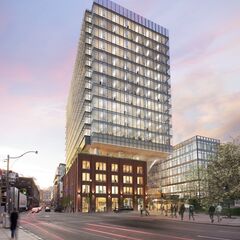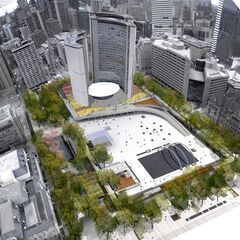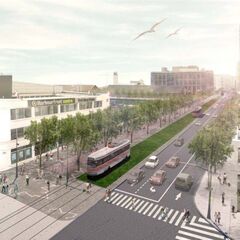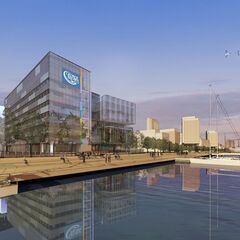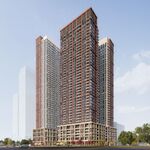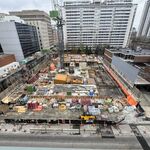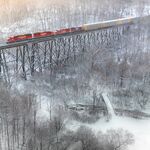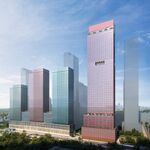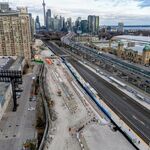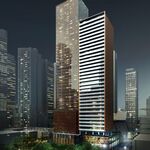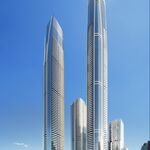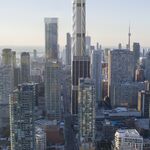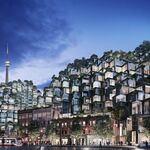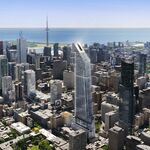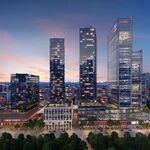Another edition of Scotiabank Nuit Blanche has come and gone, but the hundreds of photos captured from the annual arts event gives revellers the chance to relive the night, of the chance to catch up to anyone who missed it. Although the windy weather deterred some, it didn't stop large swarms of people from descending on the city to take in over 110 projects, mostly concentrated Downtown. From 7 PM Saturday night to 7 AM Sunday morning, special and independent projects dotted the landscape while four curated exhibitions produced by the City of Toronto captured specific themes.
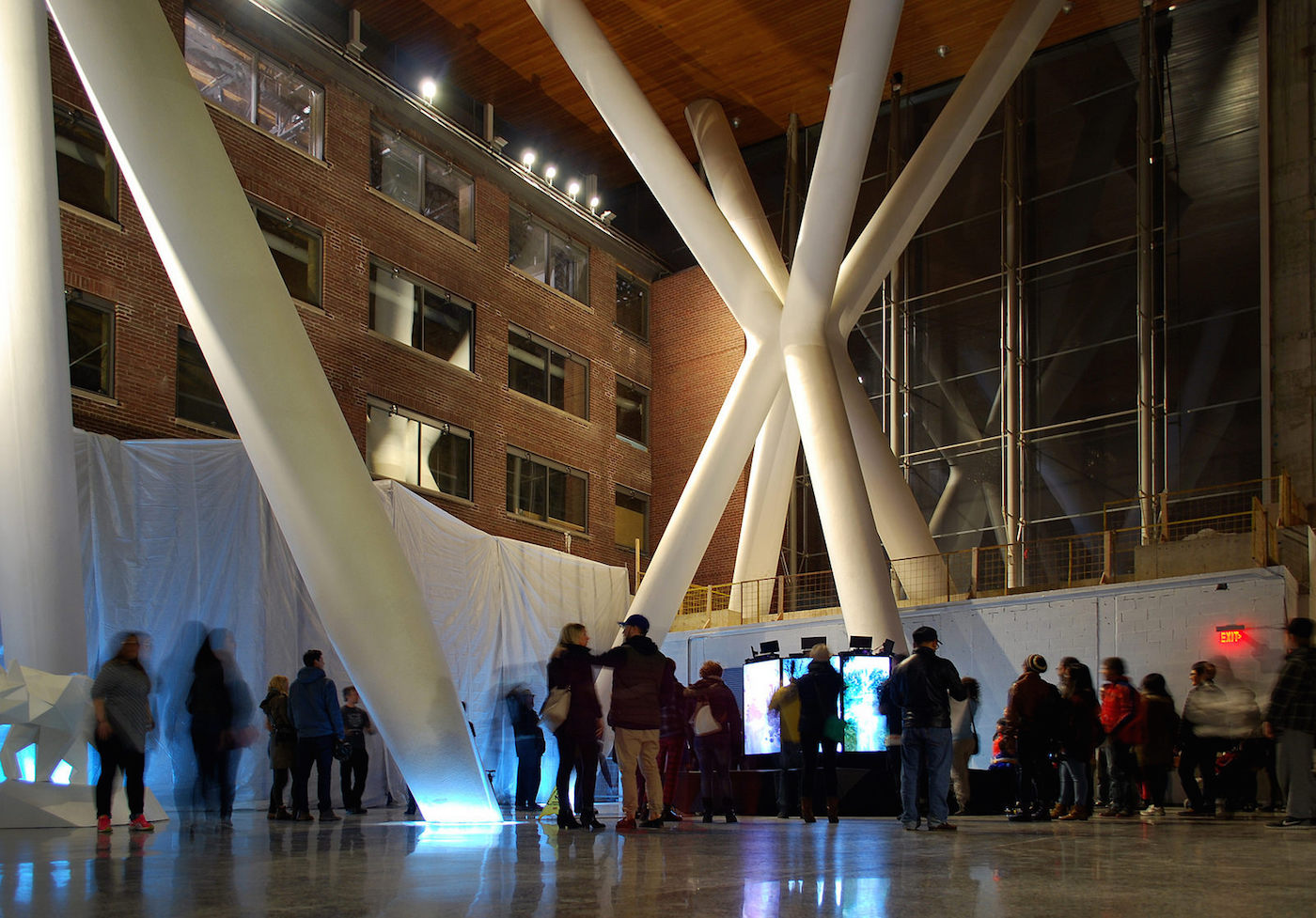 Mimir's Well, image by Marcus Mitanis
Mimir's Well, image by Marcus Mitanis
Inside the brand new stunning lobby of Queen Richmond Centre West, Mimir's Well by Michael Howatson was one of several special projects. Standing in front of a set of screens, movements made by participants were mimicked by characters from Norse mythology. The installation is positioned in the middle of two soaring steel delta frames holding offices above, making the atrium one of the most unique architectural elements in recent Toronto memory. One of many extended projects, Anyone hoping to make it inside QRC West to see the exhibit can do so until October 12.
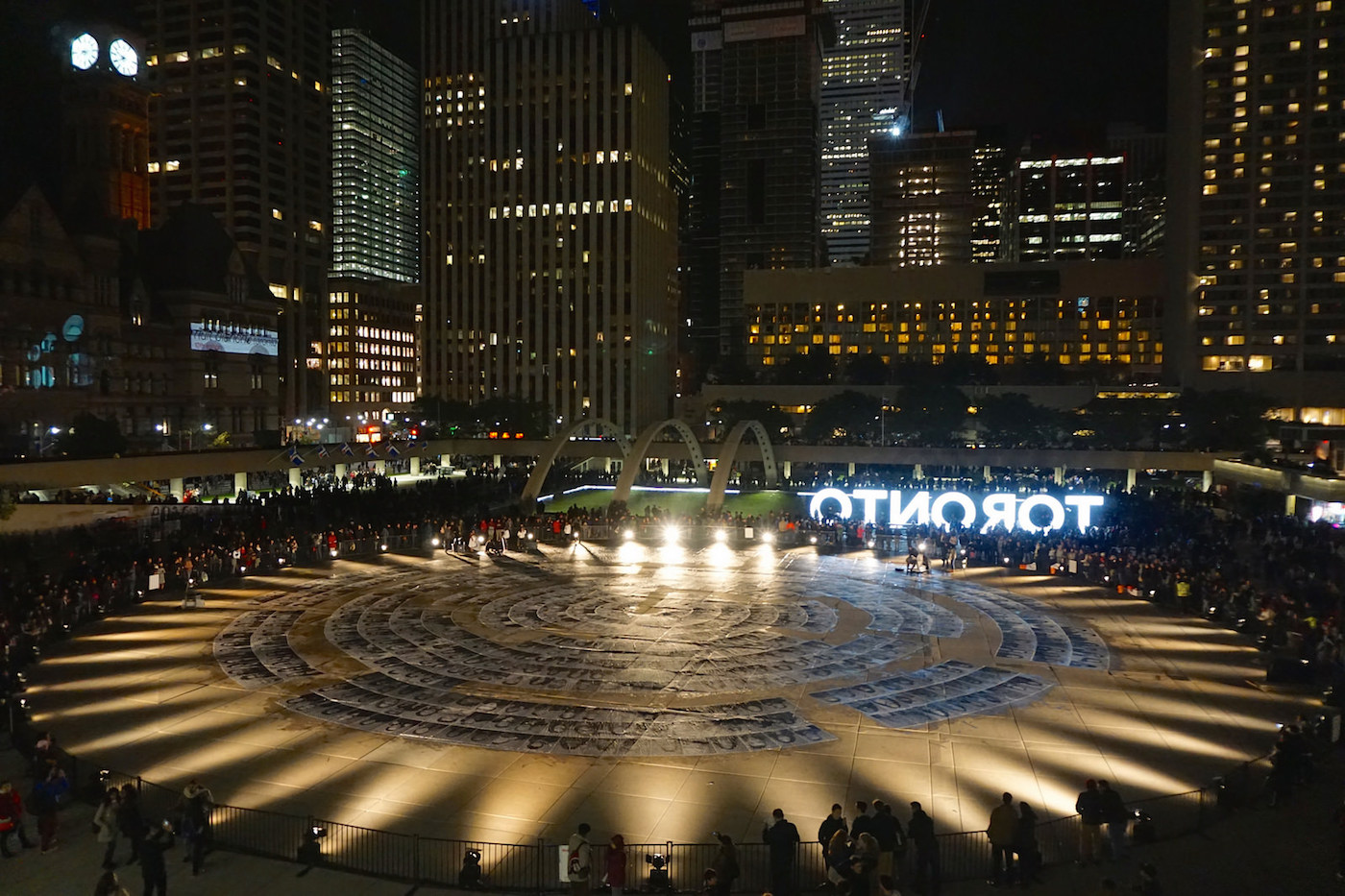 Inside Out, image by Craig White
Inside Out, image by Craig White
Nathan Phillips Square often acts as the central hub of activity and it was no different this year. With the popular three-dimensional 'TORONTO' sign already providing City Hall with a distinct look from 2014, internationally-acclaimed artist JR turned the square Inside Out. A mobile photo booth travelling throughout the city last week invited participants to contribute their portrait to a massive collage. When enough photographs were amassed, they were arranged in a spiral pattern that was best viewed from City Hall's green roof. The participatory exhibit highlights JR's idea of creating a global arts movement.
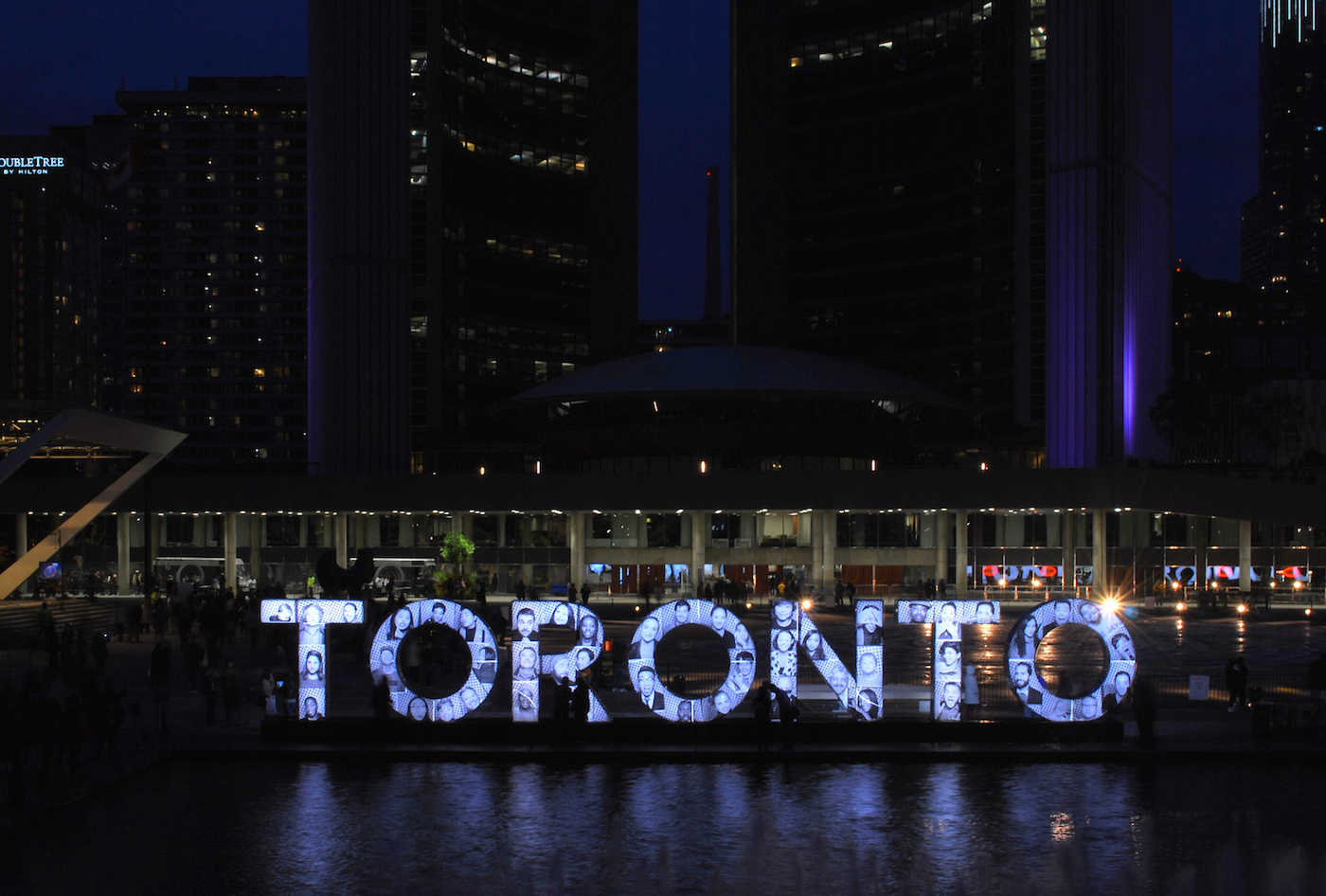 Inside Out, image by Marcus Mitanis
Inside Out, image by Marcus Mitanis
JR's work was not contained solely to Nathan Phillips Square. Black and White Night, one of the four curated exhibitions, stretched west to University and south down Bay Street. Your Eye Inside Out projected a grayscale video of an eye moving about, inviting visitors into the historic Campbell House museum on the northwest corner of University and Queen. Those who missed these two projects are in luck, as they will remain on display until the 12th.
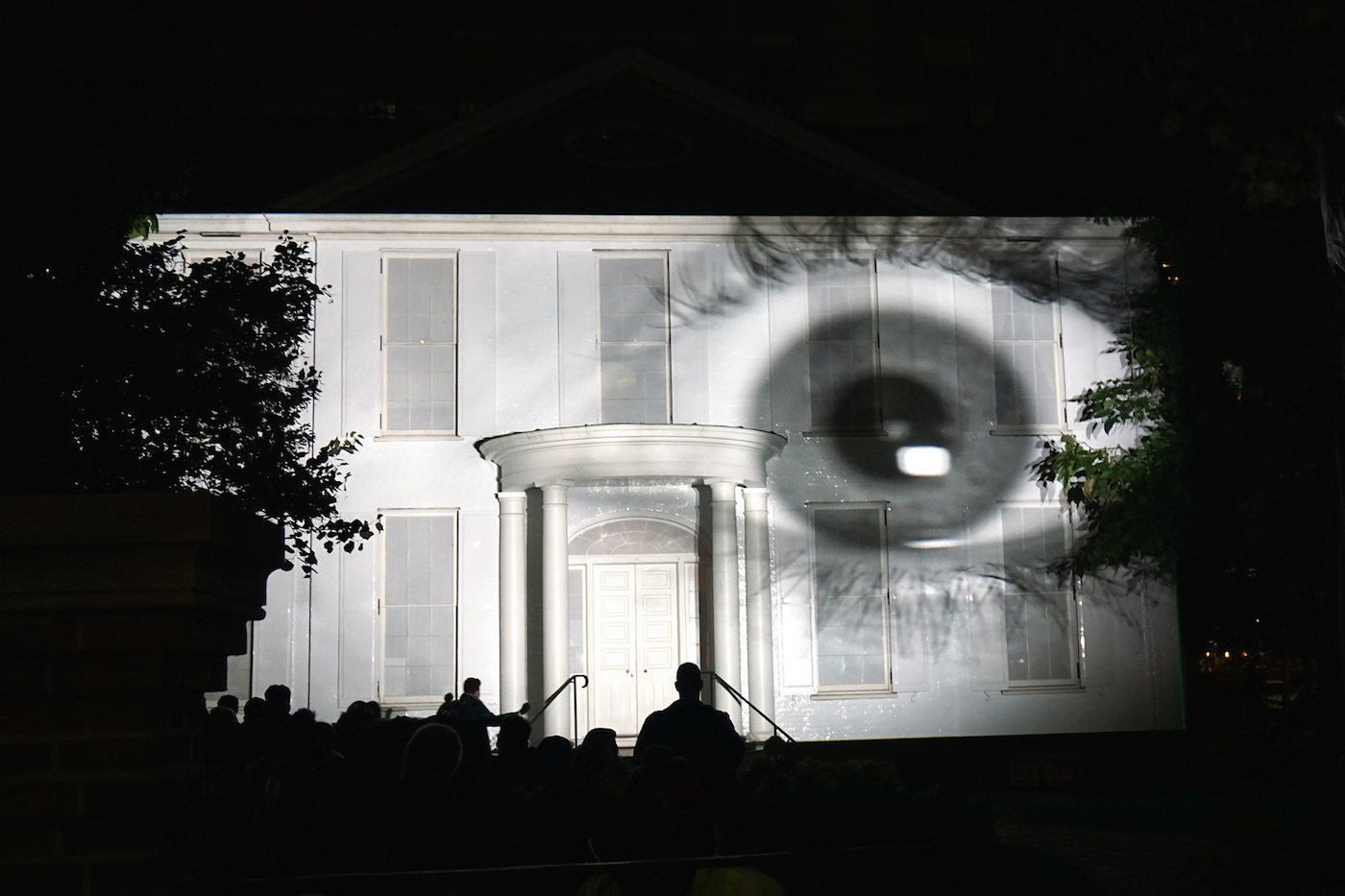 Your Eye Inside Out, image by Craig White
Your Eye Inside Out, image by Craig White
Below all the action at Nathan Phillips Square, the cavernous City Hall parking garage was transformed into something a little more welcoming: an urban green space. PARK HERE by architect Katy Chey turned the wayfinding signs that advertise the underground parking lot to her advantage; the signs marked the entrance to a lush park rather than vehicle stalls.
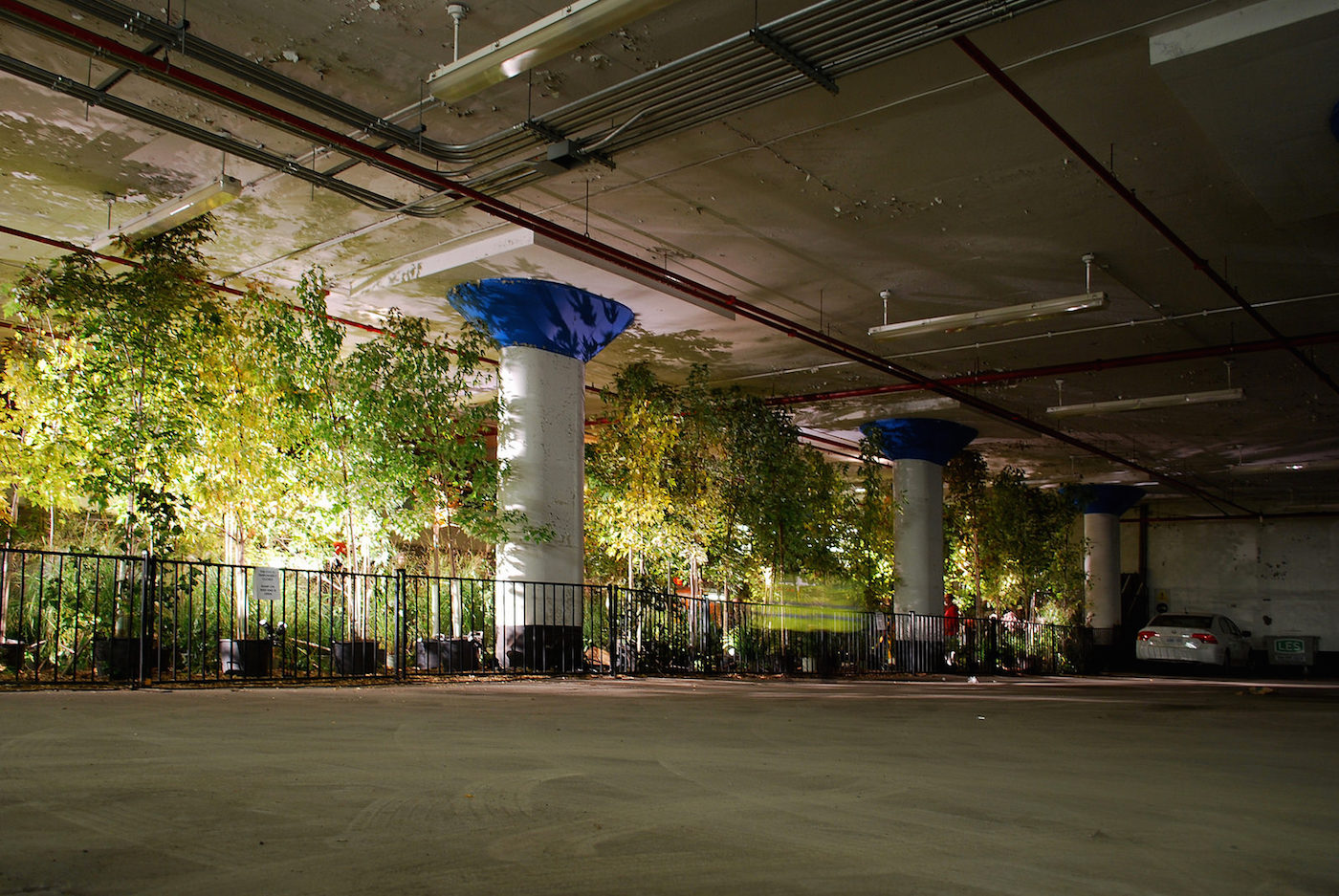 PARK HERE, image by Marcus Mitanis
PARK HERE, image by Marcus Mitanis
Back on street level, Sean Martindale's There Is No Away asks participants to examine the impact of their waste habits, remarking that "everything must go somewhere". Recyclable materials combined with everyday garbage filled up the walkway between City Hall and Bay Street, certainly making this installation the most pungent of them all. For those wanting to get a whiff themselves, this project also remains on display until October 12.
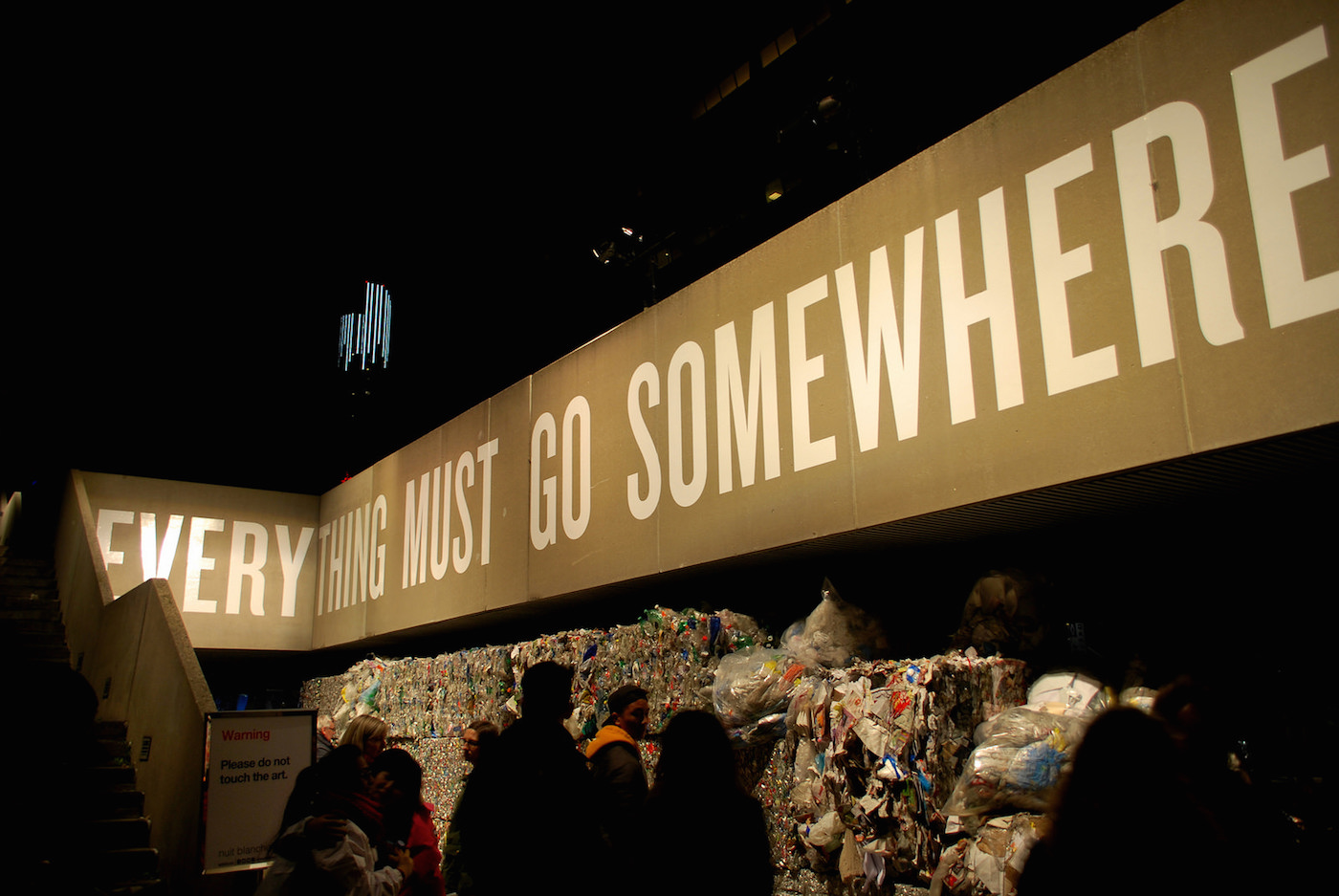 There Is No Away, image by Marcus Mitanis
There Is No Away, image by Marcus Mitanis
Walking down Bay Street, Les Bosquets captures portraits of young Parisians living in the city's housing projects. The portraits immersed in the backdrop of a crumbling building, the scene was projected onto the Design Exchange. Inside, a short film focusing on the experience of growing up in the Parisian ghetto of Les Bosquets in Montfermeil, recalls JR's transformational experience in the area post-recent riots.
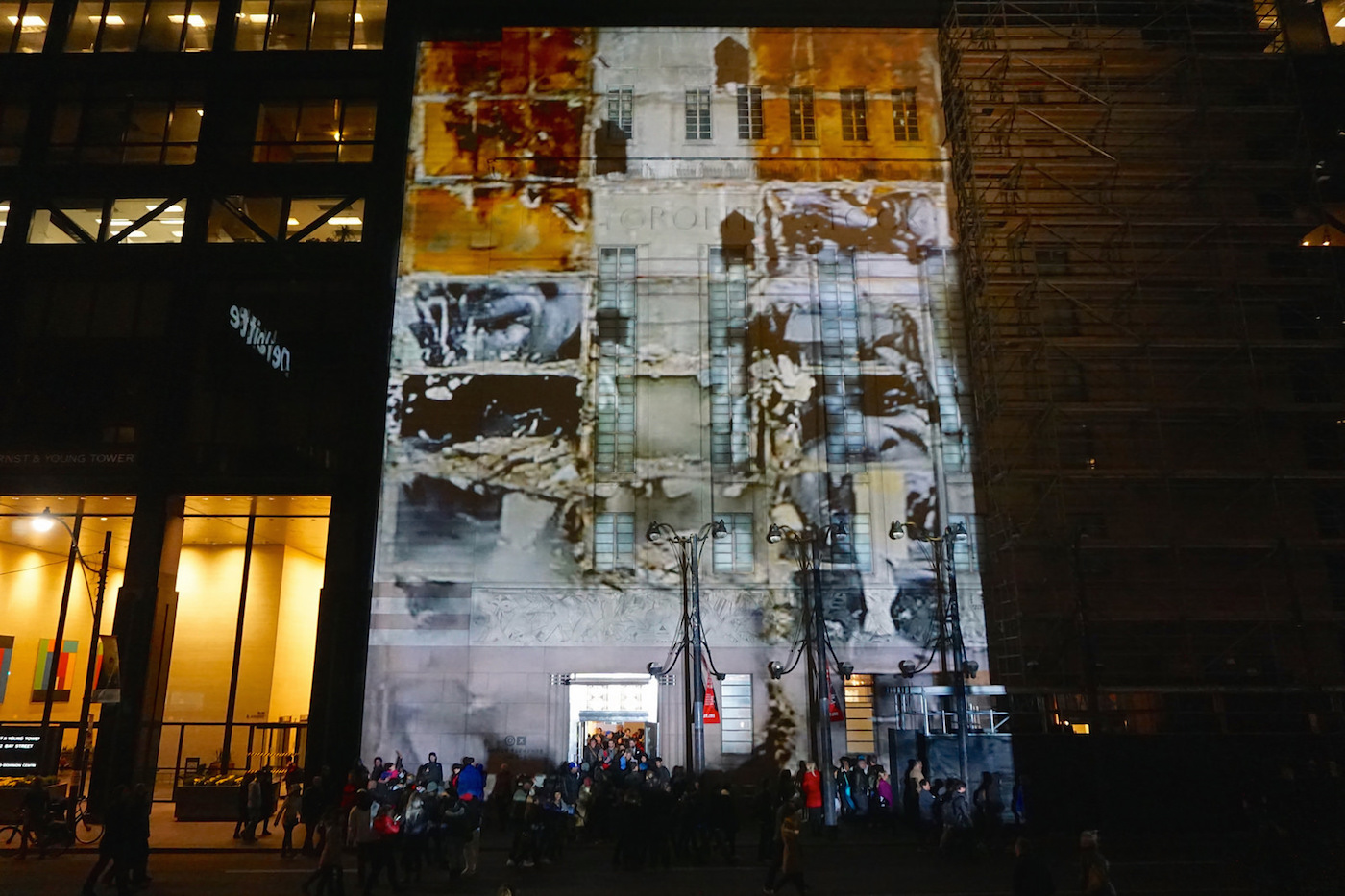 Les Bosquets, image by Craig White
Les Bosquets, image by Craig White
Across the street at Commerce Court North, a fluctuating 70 metre projection of a pine tree harks back to the days when the towering financial core was a towering dense forest. With only bits and pieces of the tree outline illuminated, the full scale image of Heather Schibli's Lost Giants can only be realized via a long exposure photograph.
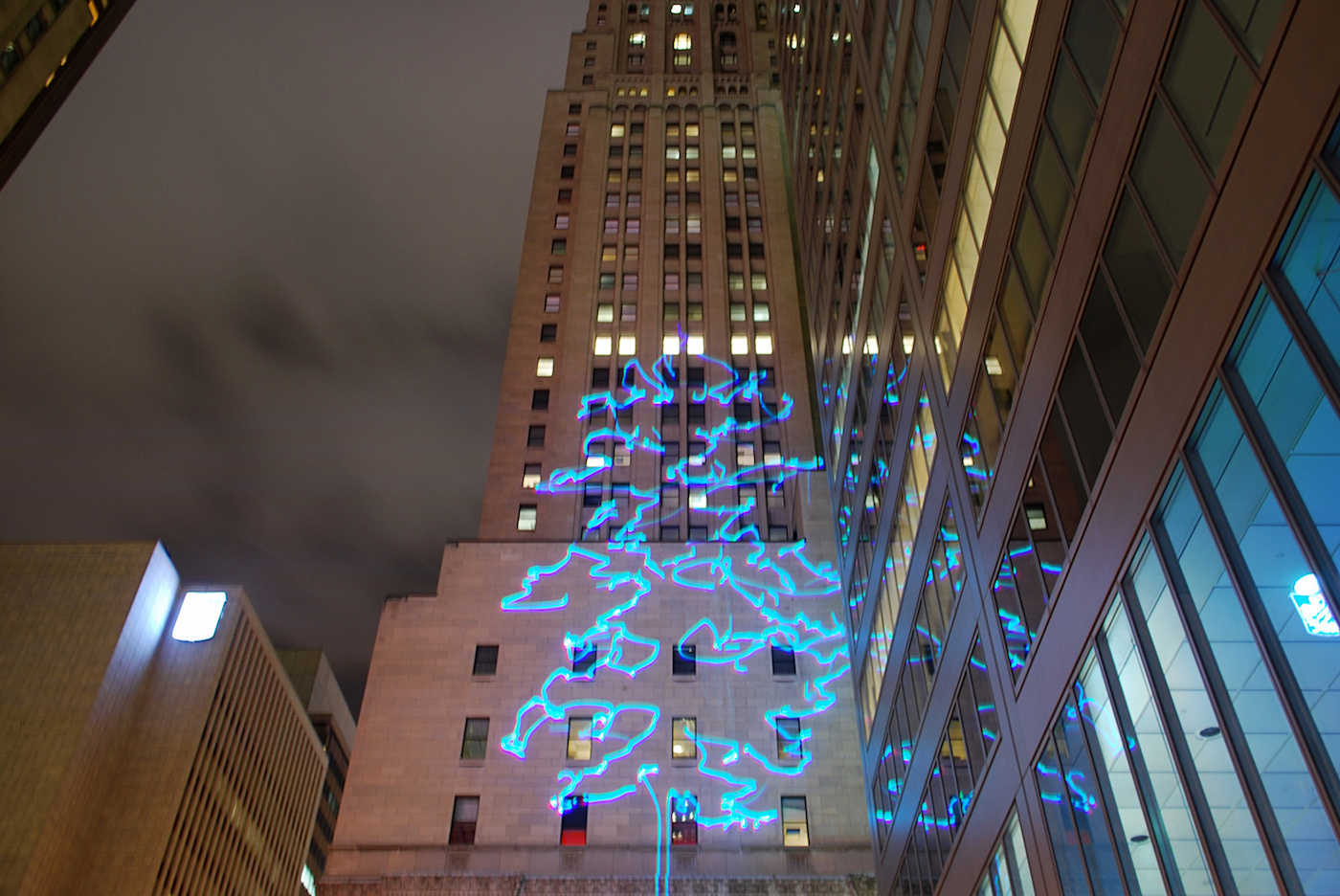 Lost Giants, image by Marcus Mitanis
Lost Giants, image by Marcus Mitanis
From the Design Exchange, yet another set of eyes can be seen. Imposed onto the path over the Bay West Teamway, The Eyes of the Bridge features the eyes of people who dream to come to Toronto. JR believes the installation can help tell the story of individuals who are often felt ignored.
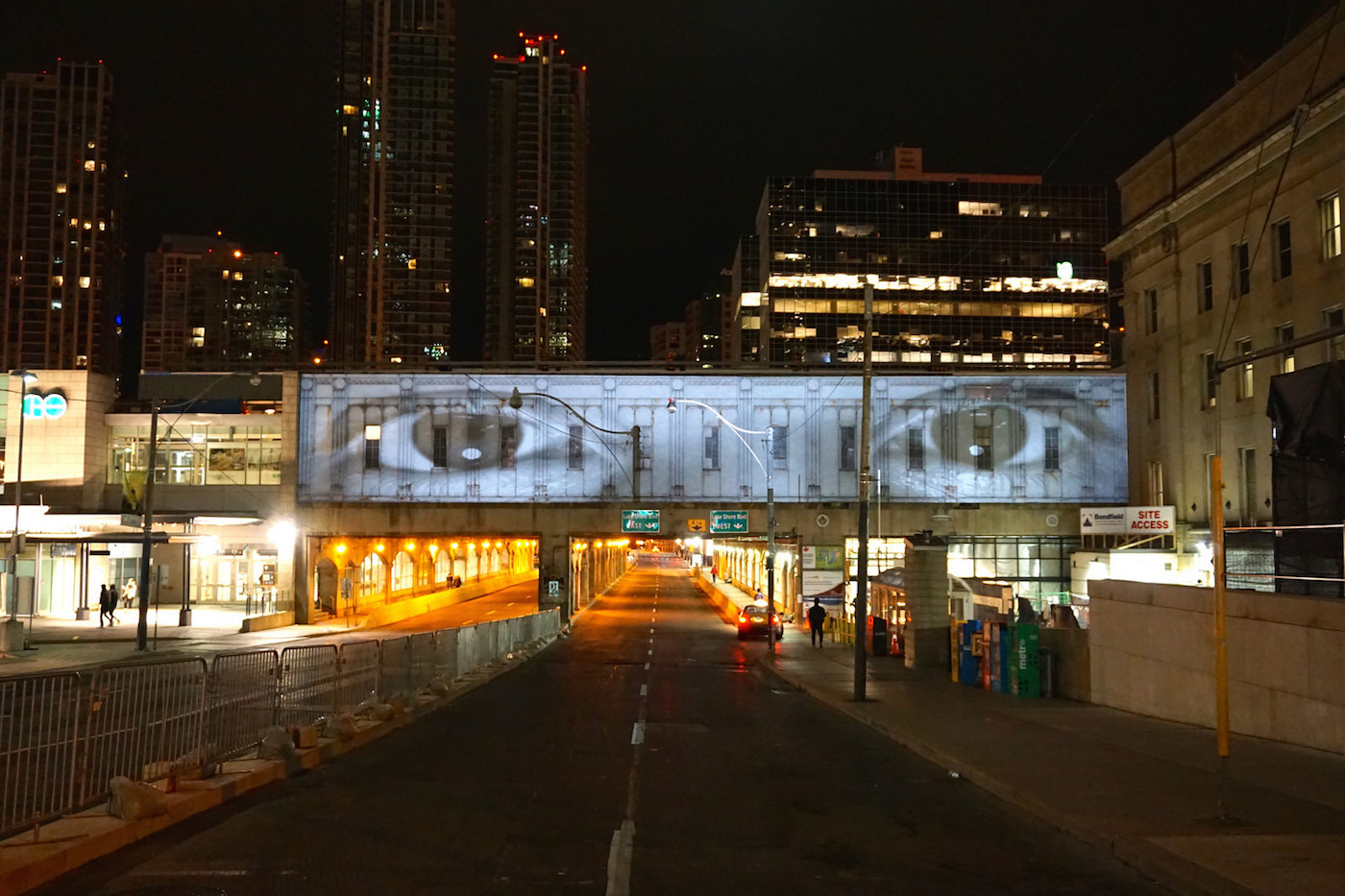 The Eyes of the Bridge, image by Craig White
The Eyes of the Bridge, image by Craig White
The revitalized Queens Quay proved to be a popular avenue for exhibits this year. Between Harbourfront Centre and Parliament Street, Christine Shaw's The Work of Wind based 13 installations on the Beaufort scale of wind force, an opportune idea given the strong gusts of the evening. As artworks lined both sides of Queens Quay, the roadway, closed to vehicles, was activated by smoking streetlights. Tim Knowles' Beaufort 1: Dispersal Zone creates a fog reminiscent of military unrest.
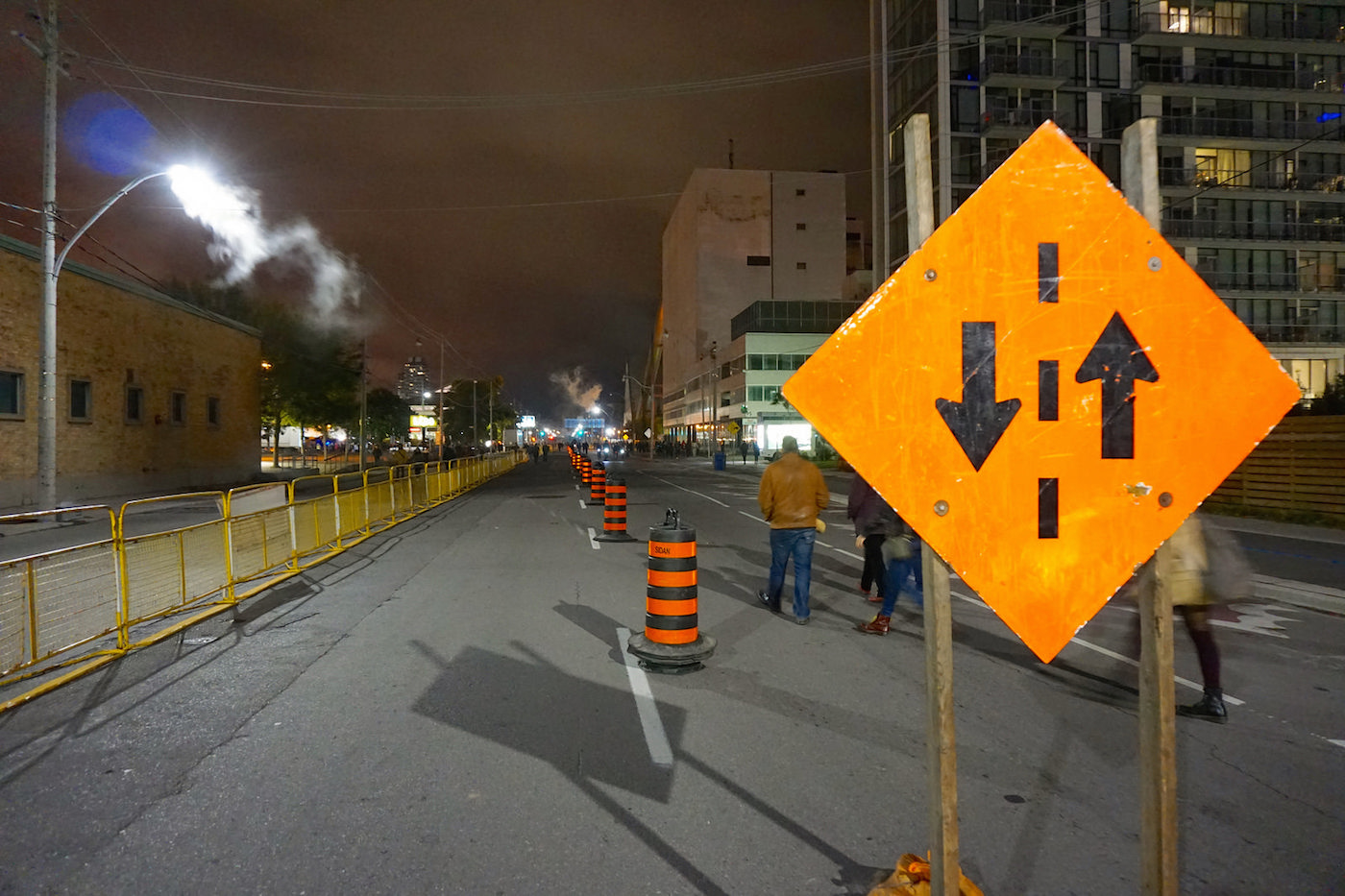 Beaufort 1: Dispersal Zone, image by Craig White
Beaufort 1: Dispersal Zone, image by Craig White
Anandam Dancetheatre's Beaufort 3: Glaciology follows 'human glaciers' as they roam from 369 Lake Shore Boulevard East to Lower Simcoe Street. The slow journey lasted 12 hours, with a constant crowd of curious onlookers surrounding them.
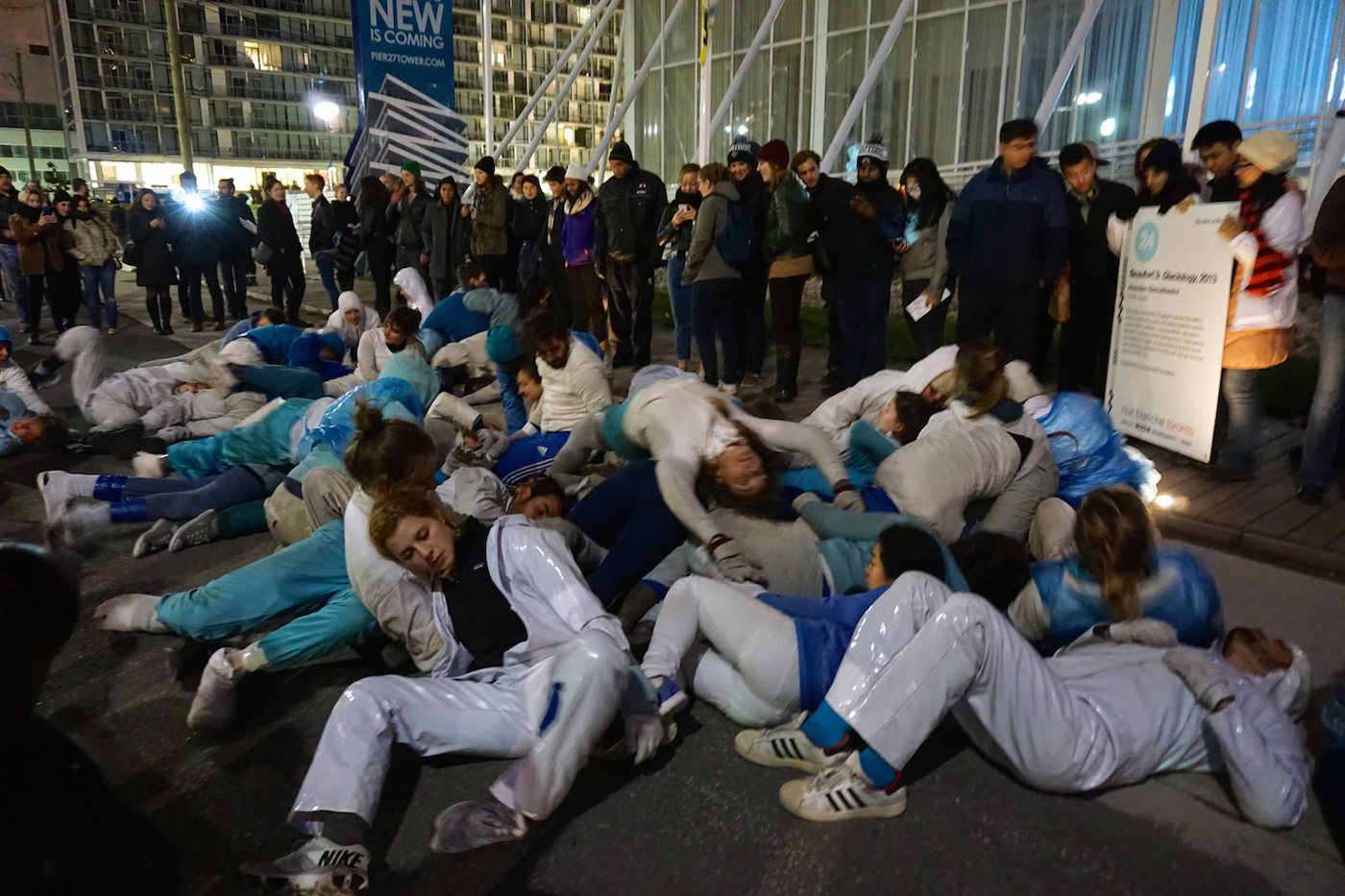 Beaufort 3: Glaciology, image by Craig White
Beaufort 3: Glaciology, image by Craig White
Mary Mattingly's Beaufort 5: Torus featured a toroidal vessel floating in the lake. Tugged ashore just before sunset, the object doubles as a meeting space and pathway, with visitors walking along the illuminated ring of the structure.
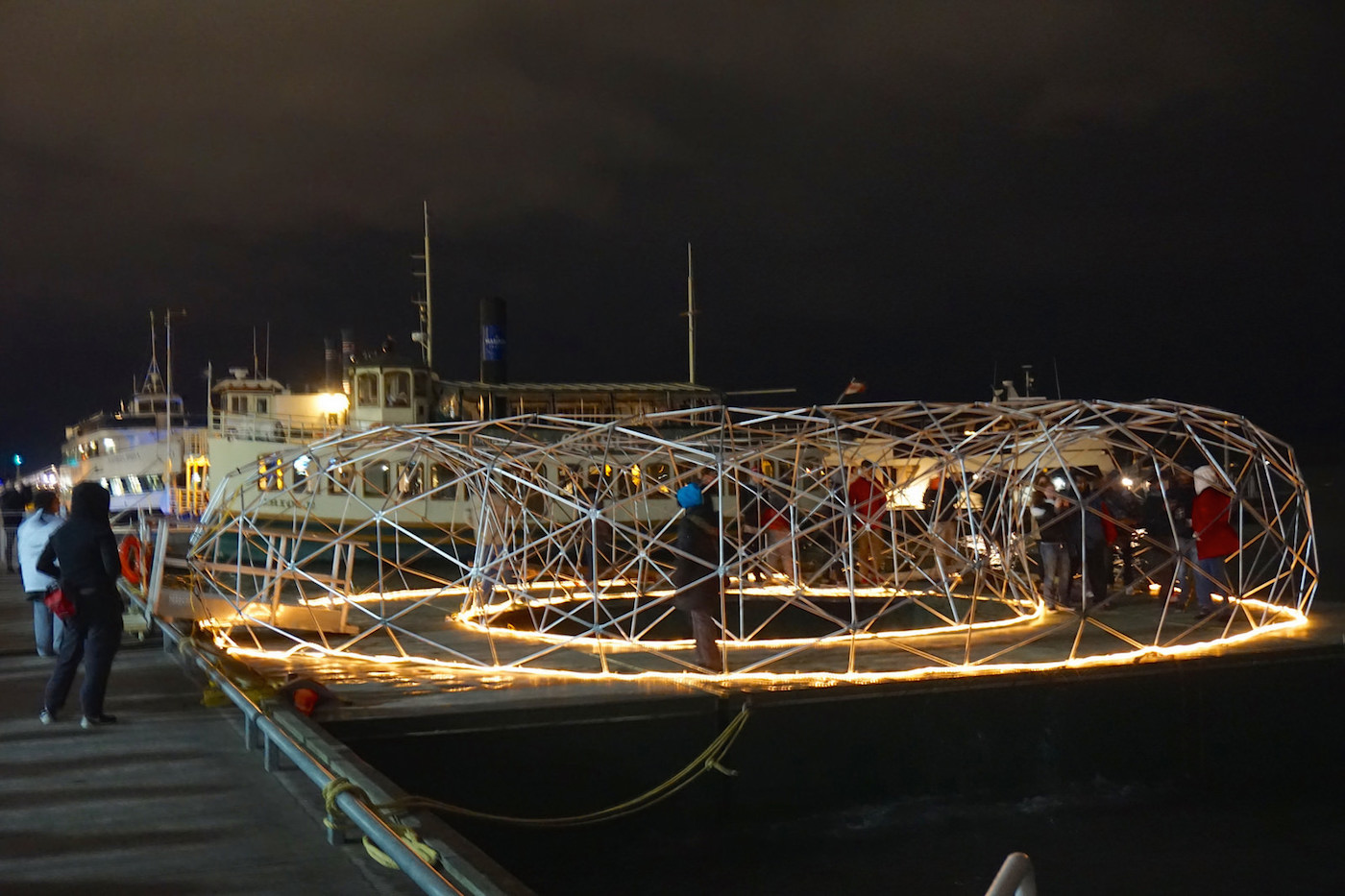 Beaufort 5: Torus, image by Craig White
Beaufort 5: Torus, image by Craig White
Heading east, Beaufort 10: Frio Estudio del Desastre is a three-dimensional representation of an exploding cinderblock wall. Pieces hang and sway delicately from the ceiling, symbolizing architectural fragility.
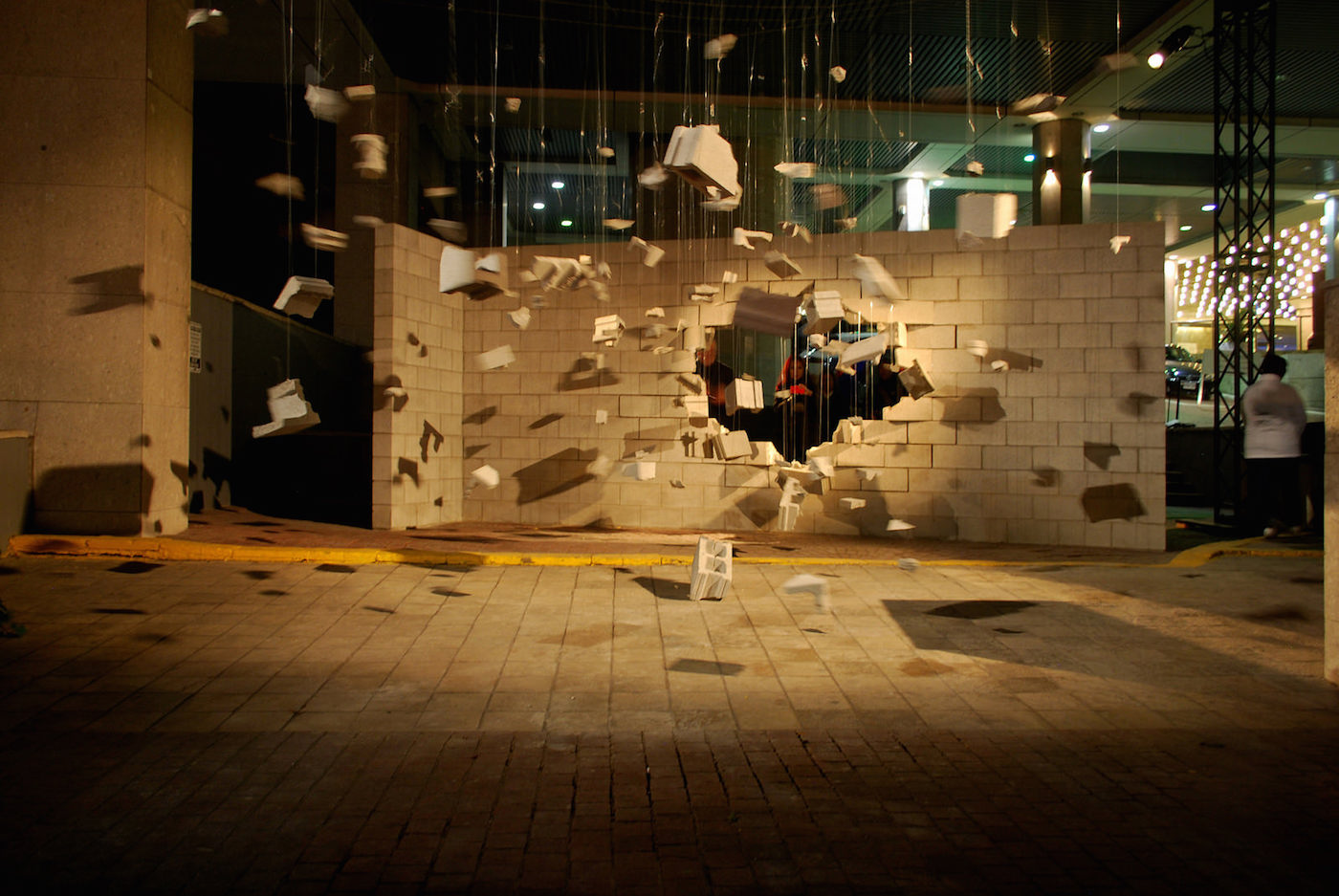 Beaufort 10: Frio Estudio del Desastre, image by Marcus Mitanis
Beaufort 10: Frio Estudio del Desastre, image by Marcus Mitanis
Performers slammed microphones against the inside walls of an empty truck trailer in Beaufort 6: Hit. The sounds were then arranged into a musical composition played over loud speakers. The stark metallic sounds combined with the rolling fog gave Queens Quay a rather post-apocalyptic vibe.
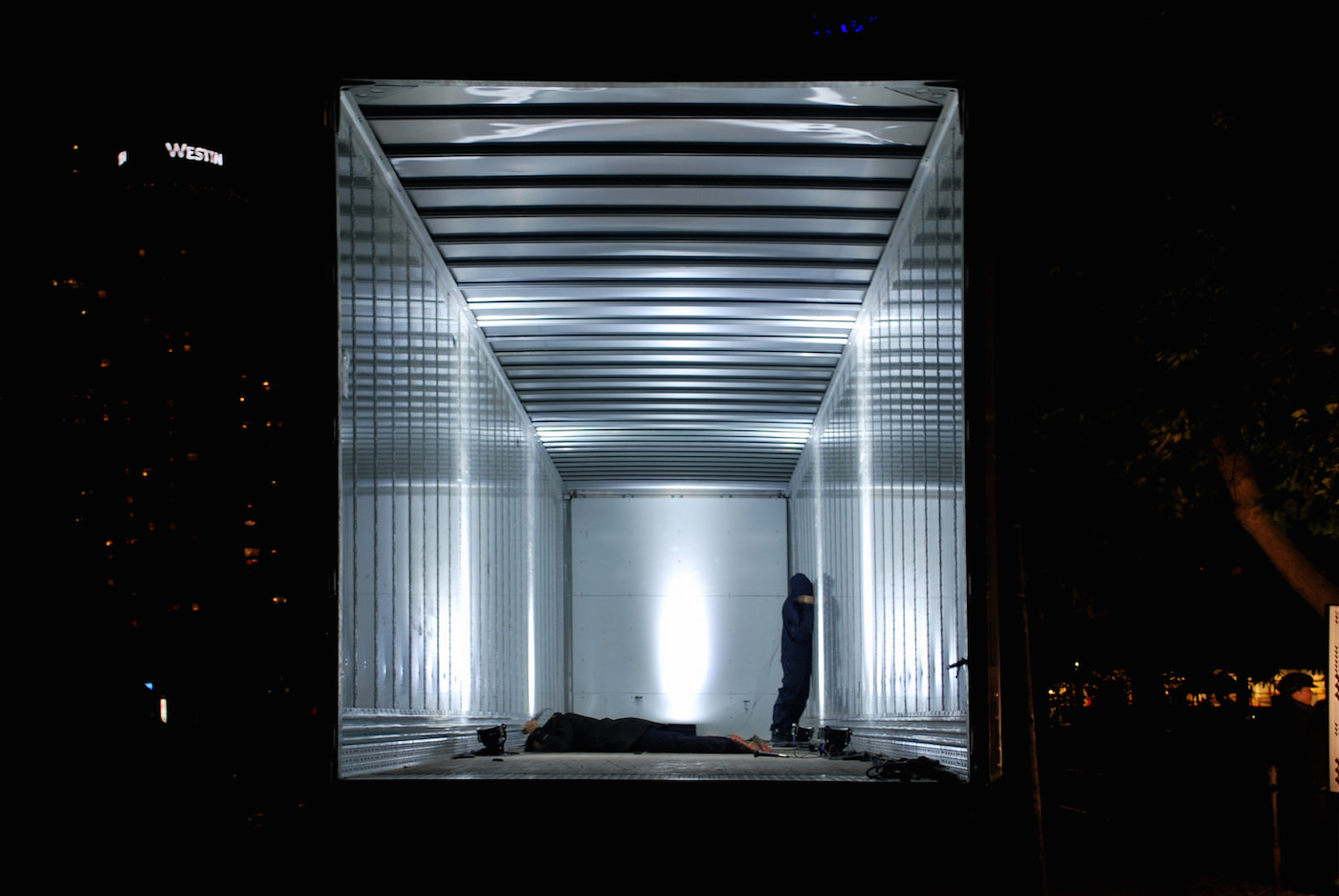 Beaufort 6: Hit, image by Marcus Mitanis
Beaufort 6: Hit, image by Marcus Mitanis
One of the largest pieces of the night took the form of a giant woodpile in the middle of the street. According to artists Heather and Ivan Morison, Beaufort 11: The Cleaving has several meanings. It's a catastrophic ruin—perhaps the result of a major natural storm—and a fortified defence. It also represents urban segregation and the splitting of the city into two distinct entities. A gateway in the mass allowed participants to get up close and personal with the installation.
 Beaufort 11: The Cleaving, image by Marcus Mitanis
Beaufort 11: The Cleaving, image by Marcus Mitanis
Providing some warmth was Beaufort 4: Lava Field No. 2. Positioned just north of the George Brown Waterfront Campus, Robert Wysocki created what is essentially a lava-making machine. The large metal contraption generated a lava field with temperatures reaching 1800°C. The 'mobile volcano' conveys the strong and often unpredictable force of nature and provided photographers with another dystopian image.
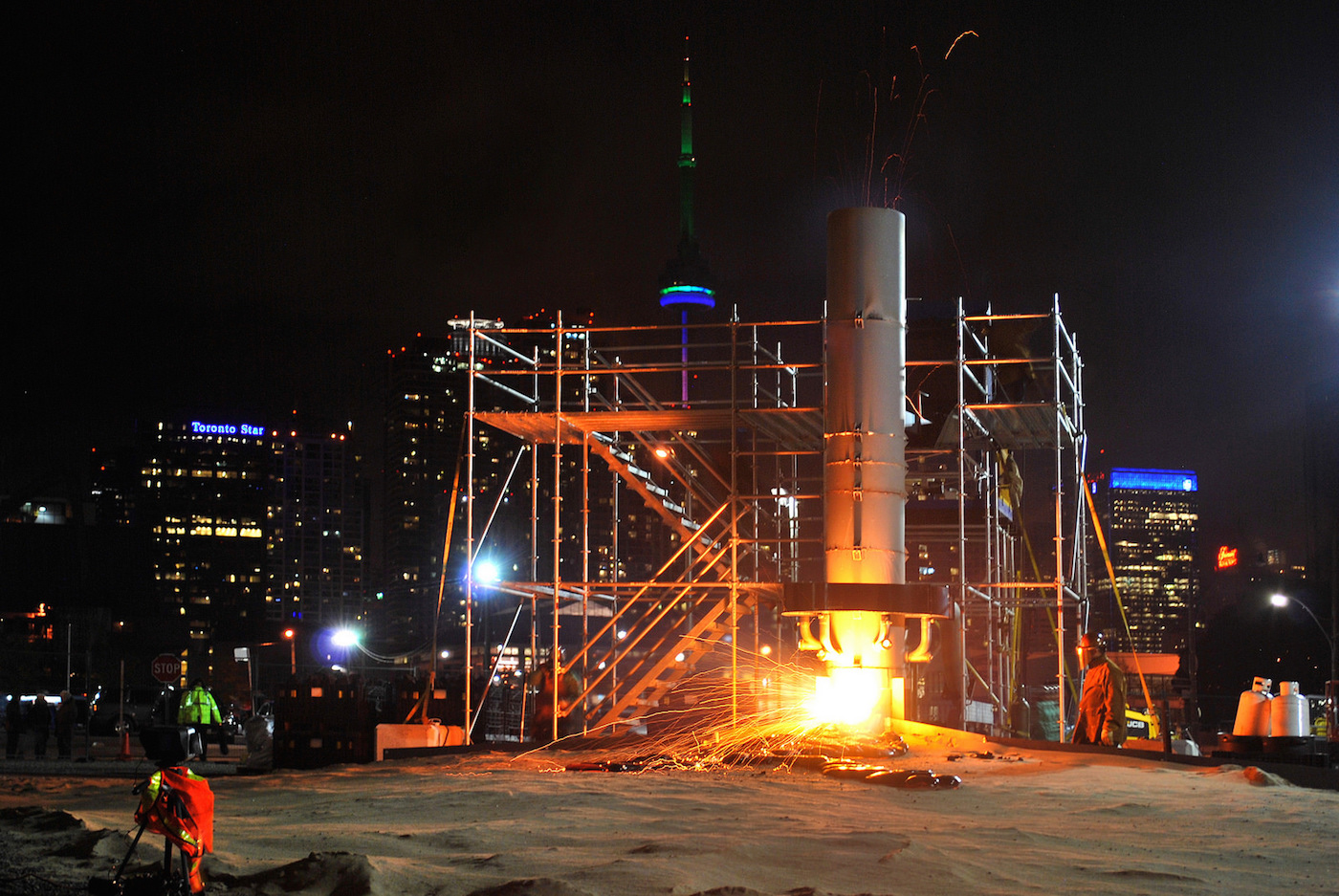 Beaufort 4: Lava Field No. 2, image by Marcus Mitanis
Beaufort 4: Lava Field No. 2, image by Marcus Mitanis
Looking even further east, the Victoria Soya Mills Silos were lit with a video from a Bolivian salt lake. Beaufort 0: Cumulus asks viewers to consider the possibility of life among the clouds, or airborne living, as a means of addressing the world's growing population problem.
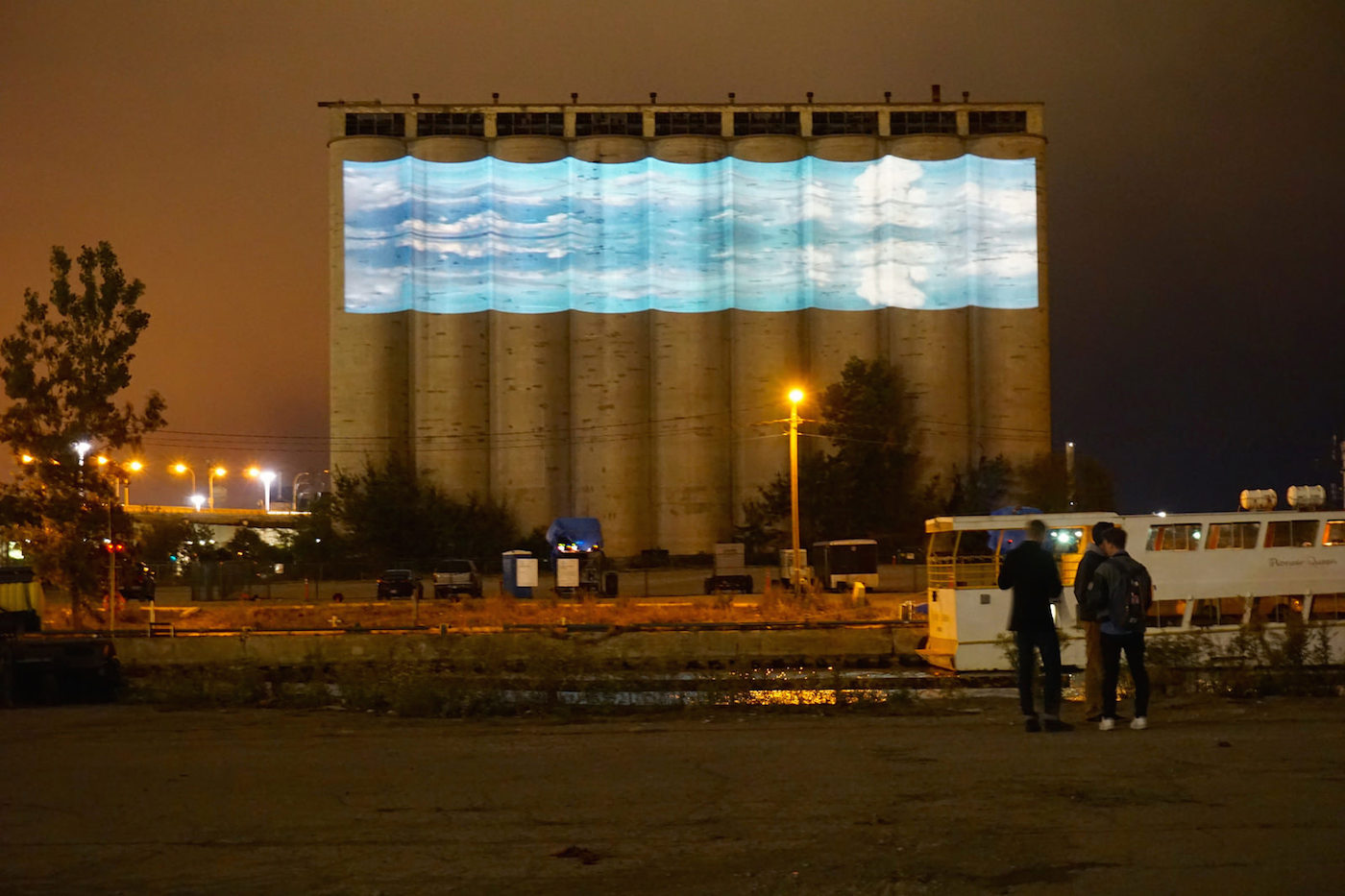 Beaufort 0: Cumulus, image by Craig White
Beaufort 0: Cumulus, image by Craig White
While Queens Quay was probably the most active street, HTUOS/HTRON by Agustin Pérez Rubio stretched from the University of Toronto campus to Allan Gardens. One work of particular note to our readers was found at the Ontario Institute for Studies in Education on Bloor Street West. Projecting three images on the front facade, Aziz + Cucher's Time of the Empress depicted the structural outlines of modernist buildings in varying stages of construction and demolition. It signifies the fragile state of many structures, especially those built in the 1950's and 1960's, which are being dismantled across the globe in favour of contemporary buildings. The piece has now been moved to City Hall's rotunda as an extended project.
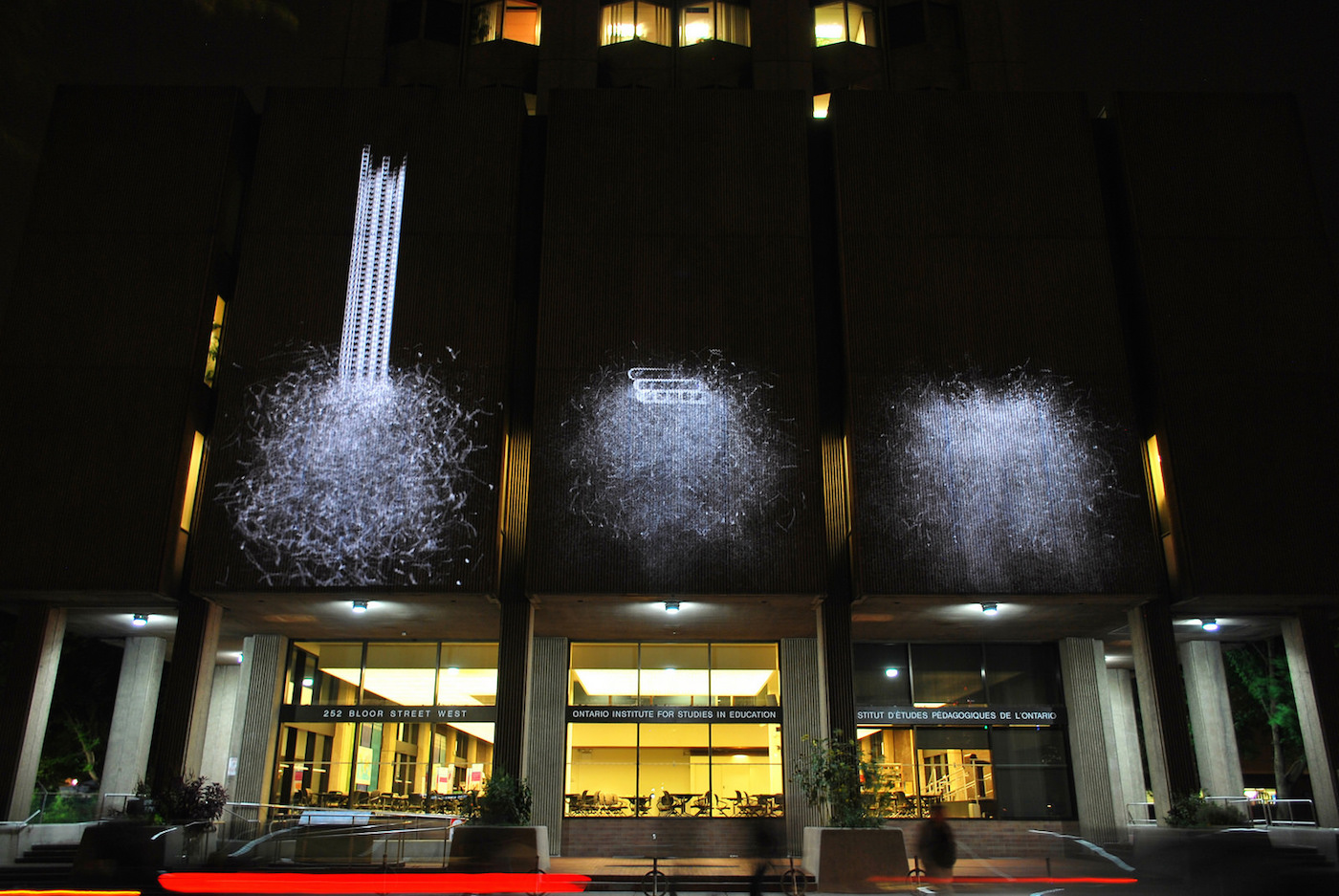 Time of the Empress, image by Marcus Mitanis
Time of the Empress, image by Marcus Mitanis
The video below captures some of the spirit from the busy night as thousands of people traversed the city streets:
The full list of extended projects is available here, so if you missed out, you can still catch some of the above exhibits. With a decade of Nuit Blanche in the books, it has become one of the city's foremost aniticipated autumn traditions. Toronto's maturity as a city, combined with its growing international importance, has become evident throughout the years, and with new public spaces and buildings changing the cityscape, the opportunity for the creation of engaging public artworks in the future continues to flourish.
Did you attend the Nuit Blanche festivities this year? Let us know by leaving a comment below or share your photos here.
| Related Companies: | Bass Installation, Eastern Construction, EllisDon, Kramer Design Associates Limited, LiveRoof Ontario Inc, Sweeny &Co Architects Inc., Trillium Architectural Products |

 2.1K
2.1K 



